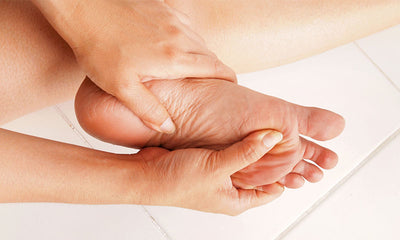You have no items in your shopping cart.
Diabetes Foot Care During The Fall And Winter Seasons
Diabetes Foot Care During The Fall And Winter Seasons
Diabetes used to be extremely challenging to manage. It almost invariably results in serious problems. The advancements we have made are a result of the remarkable developments in medical technology in recent decades. Nevertheless, diabetes can have serious consequences for one's feet. The disease can damage the nerves in your feet and lower legs, meaning that even a little cut or ache on your feet might not trigger your pain receptors to alert your brain. Thus, diabetics need to pay special attention to their diabetes foot care routine during fall and, later, winter.
Build a Foot Care Kit
Taking good care of your feet is especially important if you have diabetes. You can start by assembling a diabetes foot care kit with the following items:
- Nail file
- Toenail trimmers
- Warm socks (when the temperature drops)
- Hand mirror (improve visibility of foot)
Check Feet Regularly
Always ensure to check every angle of your feet for the following:
- Cuts
- Cracks
- Pale or whiter skin (a sign of dampness)
- Sores
Keep Feet Warm and Dry
Wet feet are common in slushy weather, such as snow. Because of the damp conditions, germs can thrive, which can then cause an infection. Diabetics should avoid walking about in wet shoes or socks, dry their feet rapidly, and pay close attention to the space between their toes.
Maintain Feet a Distance from Direct Heat
It is important to keep your feet away from any kind of heat source to prevent them from burning or becoming dried out. As nerves in the feet are particularly vulnerable to damage from diabetes, warming them might be a challenge. Numbness is a common sign of neuropathy, therefore diabetics who are experiencing it may not realize their feet are on fire.
Apply Moisturizer Daily
This preventive measure is necessary because dry skin might become irritated and break, leading to a lesion or foot ulcer. Avoid getting a fungal infection by not putting lotion in that awkward space between your toes.
Choose Properly Fitted Shoes
Properly suited footwear for diabetics should include a broad toe box to prevent cramping and supportive, non-slip bottoms to keep feet safe in wet environments. It is a good idea to wear shoes and socks that wick away moisture throughout the colder months.
Visit Podiatrist
People with diabetes are at a much higher risk for developing foot problems, therefore it is important for them to maintain routine checkups with a podiatrist. Diabetics can lessen their risk of foot complications by taking good care of their feet. As long as they continue to visit a podiatrist on a regular basis, they will be able to track any changes in their feet and get the best care possible.
Diabetes and Foot Care
One of the greatest ways to avoid foot problems in diabetics is to take care of your feet every day. Nerve damage affects almost half of those who have diabetes and nerve injury can occur everywhere in the body. The condition most commonly affects the limbs, particularly the feet and legs and loss of foot sensation is one symptom of nerve injury.









 By Express Med
By Express Med